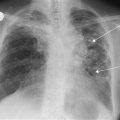Gait Abnormalities
Disorders of gait may be structural or neurological. When assessing gait, it is important to observe the whole patient and not merely the feet.
History
Duration
An abnormality of gait that has been present since birth is usually due to a structural cause or cerebral palsy. Discrepancies of length may originate from disorders affecting joint articulation, bone length or from soft-tissue contractures surrounding the joints. Most of the neurological causes of gait abnormalities result from acquired lesions of the central or peripheral nervous systems.
Associated symptoms
Pain is the underlying cause for the antalgic gait and patients will be able to direct you to the site of origin of the pain. Loss of motor function such as paralysis of dorsiflexion of the foot causes the foot drop gait, more extensive paralysis of the arm and leg with the hemiplegic gait may occur with stroke. Paraesthesia, sensory loss or impairment of joint position sense is suggestive of peripheral neuropathy. Patients with sensory apraxia suffer from proprioceptive impairment and have great difficulties walking in the dark when visual cues are lost. A concomitant resting tremor is associated with Parkinson’s disease and an intention tremor results from cerebellar disease.
Past medical and drug history
A previous history of trauma to the lower limb is very significant; fractures of the long bones predispose to length abnormalities on healing. Fractures of the fibular neck may disrupt the common peroneal nerve causing foot drop. Frontal lobe contusions may result from severe head injuries. Diabetes, carcinoma and vitamin B deficiencies are associated with peripheral neuropathies. Alcoholism, multiple sclerosis and drugs such as phenytoin are associated with cerebellar impairment. Direct questioning should be undertaken for previous strokes and Parkinson’s disease.
Examination
The clinical examination is divided into three sections. The initial examination of a gait disorder is to determine a structural or neurological cause. If a structural lesion is suspected, then it is followed by an orthopaedic examination. Conversely, a neurological examination is performed if a neurological lesion is suspected. Once the disorder of gait is defined, the clinical examination should then be tailored to determine the underlying cause.
The asymmetrical gait
The gait is first assessed for symmetry. Apart from the hemiplegic gait, the remaining unilateral gait disorders are structural. The normal gait consists of several phases: there are the swing, heel strike, stance and toe-off phases. The antalgic gait or painful limp is characterised by a decrease in time spent in the stance phase. The Trendelenburg gait is characterised by a downward tilt of the pelvis when the leg is lifted forwards. It may be caused by a painful hip disorder, weakness of the contralateral hip abductors, shortening of the femoral neck or subluxation of the hip joint. With a hemiplegic gait, the leg swings in an outward arc and then back to the midline. A foot drop gait often results in the knee being lifted higher on the affected side.
The symmetrical gait
When analysing the symmetrical gait, observe movement of the whole patient. The stooped posture with small shuffling steps and reduced arm swing is characteristic of Parkinson’s disease. Patients with apraxia have disjointed movements akin to ‘walking on ice’, the aetiology is frontal lobe disorder, most commonly due to cortical degeneration. Attention is then brought to the movement of the legs, scissoring of the gait due to crossing of the midline when lifting the leg forwards is associated with cerebral palsy and the spastic paraparesis of motor involvement with multiple sclerosis. The movements of the feet are then noted, lifting of the knees with slapping of the foot as it contacts with the ground is descriptive of the foot drop gait. The foot is rotated inwards with femoral anteversion. The base of the gait is then analysed, a broad-based gait is characteristic of cerebellar disease and sensory ataxia. With cerebellar disease, patients are unsteady standing with their eyes open, while with sensory ataxia patients are able to stand with their eyes open but not shut (positive Romberg’s test).
Orthopaedic examination
An examination of the hip, knee and ankle is required. Measurements are undertaken to determine real and apparent length of the lower limbs. The real length is the distance between the anterior superior iliac spine and the medial malleolus, and the apparent length is the distance between the xiphisternum and the medial malleolus. Any discrepancies will require individual measurements of the femur and tibia to determine the site of shortening. Thomas’ test is performed to identify the presence of fixed flexion deformities of the hip that can give rise to apparent shortening. The resting position of both feet can be inspected and internal rotation due to femoral anteversion may be apparent.
Neurological examination
The mask-like facies and resting pill-rolling tremor of Parkinson’s disease may be apparent on inspection, and examination of the limbs will reveal cogwheel or lead pipe rigidity. Patients with cerebellar disease will exhibit an intention tremor when performing the finger–nose test; in addition to their broad-based ataxic gait, they may also exhibit nystagmus, dysdiadochokinesia and dysarthria. With frontal lobe disorders, primitive reflexes such as the grasping (the hand of the examiner is grasped when placed or stroked along the patient’s palm), sucking (sucking action is produced on stroking on side of the mouth) and palmomental reflexes (gentle stroke of the thenar eminence produces dimpling of the chin) are released. Examination of the sensory system may reveal loss of light touch, vibration and proprioception in a glove and stocking distribution with peripheral neuropathy. Unilateral upper motor neurone weakness, hyperreflexia and clasp knife rigidity are features of cortical strokes.
Specific examination
Once the diagnosis of a gait disorder is made, a specific examination is now undertaken to determine the underlying aetiology. For example, with apraxic gait due to frontal lobe disorder, a mental state examination is performed to screen for dementia, and fundoscopy is performed to screen for papilloedema, which may be indicative of raised intracranial pressure from a brain tumour.




